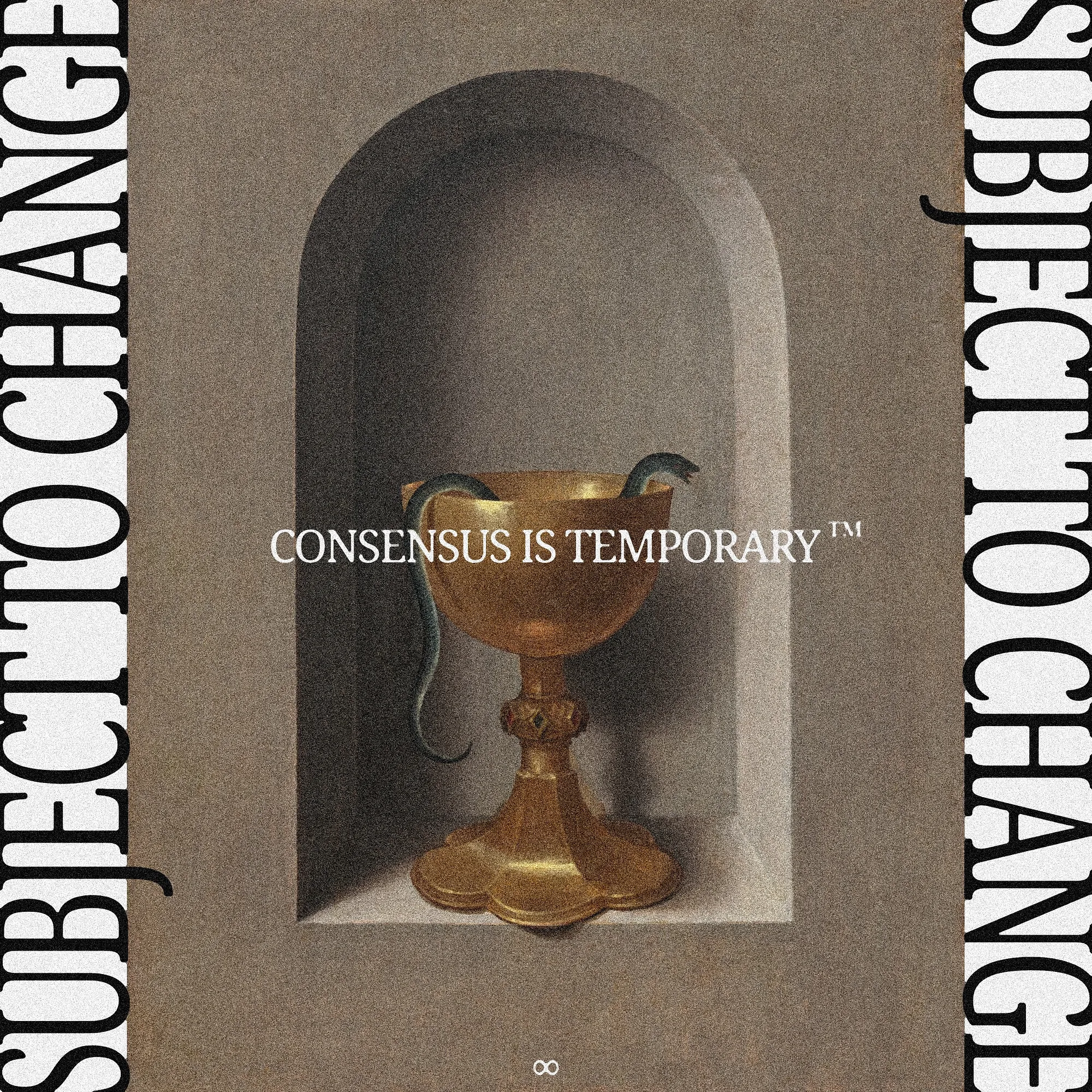Speculating on Common Knowledge


Crypto trading is a memesian beauty contest. The game feeds back into itself, an addictively immersive loop of interaction and reaction. You try to predict other people’s behavior, and they try to predict yours.
“Memesian beauty contest” references a famous economic thought experiment called the Keynesian beauty contest. It works like this:
- A newspaper is holding a beauty pageant, judged by the general public.
- If you vote for the ultimate winner, you get a prize.
- You should not vote for the young lady who you personally find the most beautiful, unless you’re convinced that your taste matches the crowd.
- Instead, vote for the contestant who you predict will be the most popular amongst all the judges.
- In other words, your goal is to vote with the majority (or plurality, as the case may be).
There’s a game on Farcaster called Social Predictions, made by Ponder, which productizes this concept, adding a couple genius twists:
- Instead of judging a beauty contest, you’re voting in a poll, which could address any topic. (Pineapple on pizza, yay or nay? Etc.)
- Anyone can create a poll. It costs 0.50 USDC as an anti-spam measure.
- The minimum fee to vote is also 0.50 USDC, but you can opt to “stake” more as a bet that your answer will win.
- All the voters’ stakes for a given question are combined to make up the prize pool for that poll.
- If your answer is the most popular, you split the prize pool with everyone else who voted for the correct option.
- Your share of the prize pool is proportional to the percentage contributed by your stake. (More on this aspect momentarily.)
“The idea is that you’re testing your intuition about what other people think,” Ponder cofounder Colin Johnson explained in a podcast interview with Splits (available on YouTube or Spotify). Evaluating poll answers from this angle is an adjustment, so “it takes people a little bit to get there.” But once the idea clicks, their curiosity is hooked. “It's a new way to kind of flex your brain,” Colin said.
We do a little arithmetic
The seeming simplicity of Social Predictions is backed by clever math, particularly when it comes to betting more than 0.50 USDC. Please note: If your eyes start to glaze over while reading the following bullet points, scroll to the next section.
Okay, nerd time. Let’s say 10 people are voting in a poll about pineapple on pizza. Their votes are distributed thus:
- Four people vote nay. Three of them use the minimum 0.50 stake, but one wagers 5 USDC.
- Six people vote yay. Four of them use the minimum 0.50 stake, but one wagers 3 USDC, and one wagers 10 USDC.
- The total prize pool is 22 USDC (including the poll creator’s initial 0.50 that started the pot).
- The nay voters get nothing.
- The yay voters are each rewarded in proportion to their bet amount with respect to the sub-pool of winners’ aggregated stakes.
- The yay voters’ collective total stake was 15 USDC.
- Minimum voters: 0.50 ÷ 15 is 3.33%, so these four each receive that percentage of the total prize pool, including the losers’ stakes. In this case, 0.033 x 22 = 0.73 USDC.
- Meanwhile, 3 ÷ 15 is 20%, so that voter gets 0.2 x 22 = 4.4 USDC.
- 10 ÷ 15 is 66.67%, so that voter gets 0.67 x 22 = 14.74 USDC.
- Each winner earned ~46-47% ROI on their bet amount, irrespective of size. A voter’s winnings increase linearly with respect to larger bets.
- Bet more and you’ll get more back, on an absolute basis, if you win. But your ROI percentage remains the same regardless of the sum you stake.
- For the highest possible ROI percentage, the proportion of the total prize pool contributed by the losers should be as large as possible. Meaning you want your group to win by the slimmest margin that still establishes a plurality. This is difficult to optimize in practice, but interesting to ponder (heheh).
Polls can be boosted, with additional money added to them — sponsored, effectively, by someone who’s interested in seeing the result (or by the Ponder team, to encourage usage of the app). This gives the voters considerably more leverage when placing their bets.
Worth noting: when you vote in the Social Predictions app, the interface calculates the lowest possible reward share percentage (with respect to the prize pool at the time of betting, which will change as more people vote). The app shows what your cut would be if everyone voted for the same answer as you, and thus everybody “won.” While this undersells your possible winnings, it avoids leaking information about how many votes each poll answer has received so far.
That’s the underlying math. What about the psychology?
Emergent consensus

Social Predictions fascinates me because it is a microcosm of the larger crypto ecosystem.
All the participants know how the game works. So the incentive is to seek a Schelling point — “a solution that people tend to choose by default in the absence of communication in order to avoid coordination failure.”
For Keynes’ original beauty contest, that probably means the blondest girl with the brightest blue eyes and a high-octane Barbie smile… because stereotypes sell. Or it could be the girl with the most friends, since collusion is also effective. (Luckily, Ponder has built-in collusion protection for Social Predictions, monitoring for statistically impossible accuracy and suspiciously correlated voting behavior.)
Crypto’s memesian beauty contest functions the same as Keynes’ classic: Number go up if, and only if, you correctly guess the coin that everyone else is guessing at the same time. “People are only interested in buying the assets they think other people will want to buy in the future,” I reflected last month. The most potent meme — or the meme with a KOL cabal backing it.
This whole process is recursive people-watching. You’re observing people to see what they’ll do, so you can make your own moves accordingly. However, so are they! What they will do is also determined by what they see others doing. This situation offers a first-mover advantage to savvy mavericks who can make the crowd dance. But it’s just as easy — easier, in fact — for a bold contrarian to step into the arena, then immediately fall on their face. (He just like me fr…)
All markets offer a form of this elaborate game, including traditional venues for investment. Demand conjures supply, and risk chases reward. However, TradFi is more tethered to ostensible “fundamentals” than crypto. Value investing, this is not — at least not how the degens “in the trenches” approach things.
Amid all the froth and PvP, there is room for legitimately fun products that use crypto to create novel coordination experiences. Social Predictions is a safer microcosm of the grand battle royale; it feels more like community sociology than gambling. And the Ponder team is not done. Upcoming features include launching pools with any ERC-20 on Base — and, most hotly awaited: rewards for poll creators.